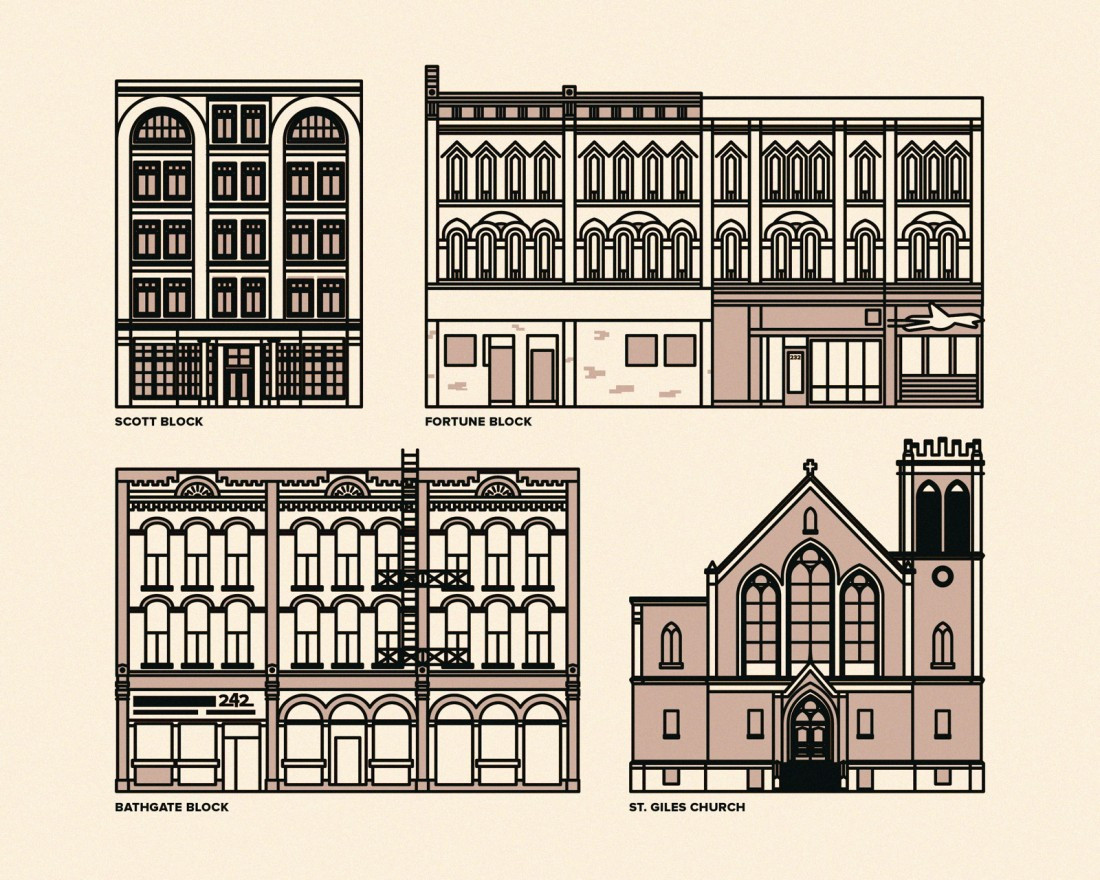Heritage groups not halting development
Due process protects Winnipeg’s heritage buildings
Justin Ladia
In the summer of 2014 the City of Winnipeg introduced its new “Historical Resources By-Law” to replace its original one from 1978. Currently, a painfully slow process is underway to transfer the city’s inventory of listed buildings to a new system. Though some of the terms used in have been updated, the basics of both bylaws are very similar.
A majority of the buildings considered “heritage buildings” appeared on the old Historic Buildings Inventory, now called the Commemorative List. These structures, which once numbered in the hundreds but were pared down drastically to save the amount of time it will take to transfer them to the new system, have some notable historic or architectural features but are afforded no protection when it comes to owners wanting to renovate or demolish. That does not change.
A small number of buildings, around 110 of them, made up the Conservation List, now called the List of Historic Resources. These buildings have what are called their “character defining elements” listed in detail and an owner needs to apply for a permit to alter these features or to demolish the building.
There is a perception that if a building is on the Conservation List or List of Historical Resources, its owner’s hands are tied when it comes to making alterations, but this is usually not the case.
As Jenny Gerbasi, chair of the Historical Buildings and Resources Committee (HRBC) for the past 16 years notes, most requests for alterations to listed buildings are dealt with at the permit level and with a subcommittee of the HRBC. They don’t require a hearing in front of the full committee, which is where they attract media attention, giving the perception that there is always conflict in the system.
Giles Bugailiskis, the city’s recently retired Senior Planner for Heritage, worked with owners looking to renovate listed buildings. He said he always recognized that the city had to be flexible when balancing historic preservation with the building’s future economic viability.
“If you don’t, then you lose them,” Bugailiskis said.
According to Cindy Tugwell, executive director of the preservationist group Heritage Winnipeg, the status given to a listed building helps protect against its demolition, but rarely impedes its re-development.
In her experience, most unsuccessful redevelopment projects fail because of factors that would stop any building project in its tracks, regardless of its heritage status. For example, a building owner underestimates the cost of replacing ageing mechanical systems in an old structure or a new use or building expansion is found to be against the building code or opposed by the city’s planning department or the building’s neighbours.
Though not derailed by the HRBC or heritage groups, it is often made out in the media to be a problem resulting from the building’s “heritage status.”
Bugailiskis, Gerbasi and Tugwell all agree that the flexibility they speak of usually ends when the owner of a listed building seeks demolition or decides to sit on a property long-term and allow “demolition by neglect.”
As Tugwell says, “Let’s stop making excuses why heritage is not economically viable and let’s get them (listed buildings) into the hands of people who can make a go of them.”
Christian Cassidy writes about history at his blog, West End Dumplings.
Published in Volume 70, Number 9 of The Uniter (November 5, 2015)






